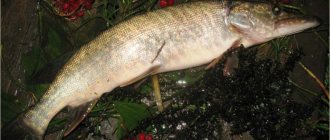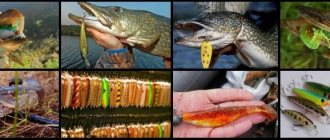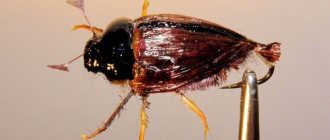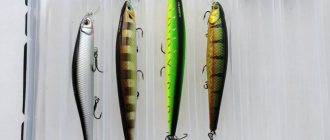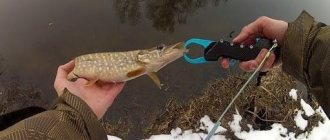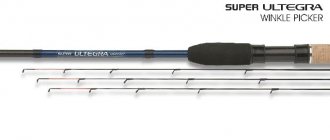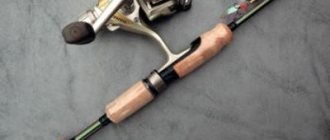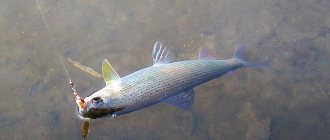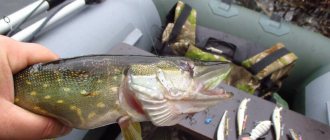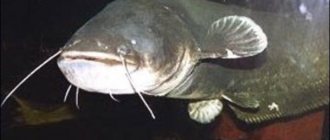Peculiarities of biting in the autumn months (September, October and November)
Warm, cloudy days are the ideal time to catch spotted predators. But a light drizzling rain will not affect the biting activity at all. At the end of September - beginning of October, the most intense bite is observed in the mouth areas of small rivers (approximately the last 10-15 km). Autumn pike bite all day, you need to look for it throughout the entire reservoir. It can be both on the surface and at depth. The colder the water, the larger the bait should be.
Let's equip a spinning rod for pike.
Rod
- for small rivers - light, length 2.1-2.4 m, test load - up to 10 g.
- for medium rivers - length 2.4-2.7 m, test load - up to 20 g.
Coil
We take a spinning reel, as it is very convenient to use, and it is also a reliable and flexible tool. Inertia-free is the best option for spinning at the moment. When choosing, pay attention to the fact that the reel has a smooth ride and ease of rotation.
- for light spinning rods – size 500-1500;
- for medium spinning rods – 1500-2500;
- for powerful spinning rods – 2500-3500.
fishing line
When fishing with a spinning rod, two types of fishing line are used.
- – monofilament, 0.18-0.2 mm – for catching small pike;
- – braided, 0.10 – 0.16 mm – for catching large pike.
Braided fishing line is stronger and not subject to stretching, so it is better to opt for it. We choose a braid with a larger cross-section. One fishing line may have stronger impregnation, while another may have weaker impregnation. Weaker line may hold knots better, so choose according to your preference. The color of the fishing line does not play a special role, but more often they give preference to a colorless fishing line or choose it to match the color of the water.
More and more often, anglers are choosing a dark green color option.
Leash
- tungsten;
- fluorocarbon;
- metal (guitar string).
When fishing for pike, you should always use a leash because its teeth can cut any braided line. Types of leashes do not affect the game of bait. But the metal one can bend, and you have to straighten it by hand. Practice shows that metal leashes are more reliable. You can even make them yourself from guitar strings. A number one string with a diameter of 0.08 mm is quite suitable.
Searching for pike in a pond
September-October is best to fish in the upper layers of reservoirs. But it is worth remembering that large pike still prefer to stay at depth.
In November, the pike goes deeper again. You can try to catch it in holes or deep water.
November pike fishing in the fall with a spinning rod video
Fishing for pike in autumn using a spinning rod video
Jig fishing for pike in the fall using a spinning rod video
Fishing for pike in the fall using a spinning rod video. Pinwheel.
Catching pike with spoons
Oscillating spinners
Since high requirements for playing an oscillating spinner are not required, the spinning rod can be of either fast or medium action. The test is approximately selected according to the weight of the bait being thrown. If the spinner weighs 10 grams, then the rod test should fluctuate 5-20 grams. If you fish from the shore, the length of the rod should be 3 meters. This rod will help you make a long cast and control the pike when fishing, preventing it from getting caught in a snag or around any obstacle. When fishing from a boat, we do not need a long rod, and in some cases it can be a hindrance. The length should be 2-2.10.
The reel can be either spinning or multiplying. Since it is easier to work with inertia-free (it is cheaper and less demanding to maintain), this option will be preferable. With a pulling force of at least 2500. The shape of the spoon should resemble the body shape of the fish living there. The color of the spinner doesn't really matter. But it should be taken into account that in sunny weather, light-colored spinners give off large glare, which scares away the pike. Therefore, you need to take a dark spinner.
Fishing technique with an oscillating spoon. Fishing with a spoon is quite simple: throw it out and pull it evenly towards you. If during retrieving we see that a predator follows the lure but does not attack it, then it makes sense to make short jerks with the rod so that the lure makes jerking movements from side to side. This often provokes the predator to attack.
Also, if there is depth in the fishing area and it is possible to let the spinner fall into free fall for 2-3 seconds, then during retrieving you can make short pauses, pausing the reeling of the reel (the spinner falls freely at this time). This will imitate a wounded fish and provoke the pike to bite.
Spinners
We choose the same spinning rod for fishing with rotating spoons as for fishing with spoons.
Mepps #3
Many anglers praise Mepps spinners. Indeed, these lures often produce results. Pike loves red, we know that.
Fishing with a rotating spoon is practically no different from the technique of fishing with a spoon: we throw it and evenly pull it towards us. There are two types of spinners: with a wide blade and a narrow one. The wide blade has a more sweeping play, but a low rotation speed. With a narrow petal the opposite is true. In practice, it has been observed that pike prefer a wide blade with a lower rotation speed. When fishing in shallow water, when we visually observe a predator, but he ignores the spoon and does not want to grab it, we need to slow down the retrieve and let the spoon lightly stroke the bottom with its petal. This affects the pike like a red rag on a bull.
Choosing a place to catch pike in the fall
First. The most important commandment is to catch fish where they are. It is useless to throw bait in your own yard, or at a stadium, there are no fish there. Location and location again is the number one factor. There are several possible options for attractive places for successful fishing:
1. Reed border.
We pay attention specifically to the border of the water surface and the walls of vegetation. The pike is an ambush predator, it stands in the very vegetation and carefully guards its territory; nothing disappears from its field of vision, not a tightly packed school of roach, not a lonely fish swimming by. An instant ambush and the victim is caught. For a fisherman, you need to imagine the nature of the behavior of the predator, understand the place of its intended stop, present the bait and wait for a confident grip.
2. Border
other other aquatic vegetation. The algorithm is absolutely similar to the one described above, with the exception of one point, the type of bait used, but more on that later.
3. Coastal edge.
I’m sure many people have heard the expression “it was biting on the shoreline today.” If we decipher it, we get that the fish was biting at a sharp change in depth at some distance from the shore. Why is it convenient for pike to be there, the answer is simple - natural shelter, the fish stands either huddled or at some distance from the shore dump and patrols its surroundings, while remaining unnoticeable to the prey.
4. Underwater anomalies.
Again we must remember that the fish stands and hunts only where it is convenient for it. Not where it is convenient for the fisherman, but specifically for the fish. I repeat that pike is an ambush predator, and the presence of shelter is important for it. An underwater snag, an old sunken boat, a bend in a flooded stream. These places can be detected either with specialized equipment - an echo sounder, or by changes in water flows, but this is a complex and special case. For the most part, fishermen actively use technology and rely on acquired experience.
Silicone lures for pike
Silicone baits can be varied:
- worms
- vibrotails
- twisters
- crustaceans
- frogs, etc.
The spinning rod required for fishing with silicone baits is different than for fishing with spinners. A spinning rod for jigging needs a fast action.
The test is selected based on the weight of the bait being thrown.
About installation technique. Take a jig head (it can be a jig of any shape or a ball with two ears, which is popularly called a Cheburashka), and the ball is mounted with a hook on the winding rings. We put silicone on the hook. Silicone lures come in different colors, but we recommend using either white or red and white for pike.
The technique of fishing with silicone baits involves jigging (twitching). You need to find an edge on the pond. We throw it onto this edge and take a step down from it. We can see from the rod when the bait is in a free fall, when the bait touches the bottom, we again make two or three turns of the reel. Wiring: 2-3 turns – pause, etc.
Fishing with foam fish
We catch fish with foam rubber in the same way as with silicone.
It has been noticed that when the predator is less active , the step should be short , and when fishing with a foam fish, it makes sense not to throw it immediately from the bottom, but to leave it motionless on the bottom for 3-4 seconds. The pike reacts to this with an immediate attack.
When fishing in snags, in order to avoid frequent snags, it is better to choose a bullet-shaped weight head, as it passes better through obstacles and is less susceptible to snags. You can also use a Tyrolean stick to avoid snags. The hook tip is embedded in silicone. We catch with frequent short light twitches.
It is preferable to choose foam rubber baits in yellow and mouse colors. It has been noticed that they work better.
Techniques for catching pike with a spinning rod
We have already learned the first and most important rule, to fish where there are fish. Then the rule of accurate casting comes to the fore. You need to throw it carefully and precisely to the expected location of the pike. If you are fishing from a boat, you can approach a comfortable casting distance of 20/25 meters. This will be enough not to scare the fish, but to be as accurate as possible. The first retrieval of the bait must be done with absolute concentration; often this is the most effective retrieval. Active fish respond to precisely placed bait immediately.
When fishing from the shore, the fisherman needs to evaluate five or six promising casting trajectories, taking into account all fishing conditions; if there are no bites, it is better to change the place. The shore fisherman is fed by his feet and knowledge of the body of water. So, let’s imagine that the first part of our plan has been completed, the cast has been made, the pike has bitten, now we move on to the most emotional part - fishing.
The most important thing is to be calm, not to give any slack to the braided line, to operate the friction brake of the reel smoothly, and to try to prevent the pike from reaching the so-called “candles”, since often at this moment the fish leave. Pike, especially in autumn, are very active in the process of fishing and are an excellent fighter.
It’s great if you have a large landing net with you, which will allow you to easily and safely receive the trophy. If there is no landing net, carefully take the fish by the gill cover, and in no case by the eyes, the pike is a worthy opponent, respect it! Of course, the ideal case is if, after catching and recording emotions on camera, you release the fish back into its element, because the “catch and release” principle is the key to future successful fishing trips.
Now let’s look at the time intervals in spinning pike fishing in the fall.
Fishing with poppers and wobblers
Among the variety of wobblers, the most catchy in the autumn are the following:
- crank
- minnow
- jer-bait
YO-ZURI 3D Flat Crank | Jaxon KarasYO-ZURI | Dino Crank
Three successful Crank wobblers for pike, which have successfully proven themselves among spinning anglers.
A spinning rod for fishing with a wobbler should be taken with a fast action. A spinning reel is suitable for minnows and cranks; for fishing with jer baits, due to its weight, the reel should be a multiplier, since a spinning reel will quickly fail. When the pike is active, it bites better on the crank. During periods of less activity, minnows are preferable.
Wobbler fishing technique:
- Crank : throw and pull slowly (uniform wiring). It makes sense to pause a crank with neutral buoyancy for 2-3 seconds.
- Minnow : Even wiring can be used. During wiring, you can make short jerks so that our wobbler changes direction. Or you can do torn wiring from the very beginning. It has been noticed that shallow-depth wobblers of natural colors attract predators more, and bright acid-lemon color is more suitable for wobblers with deep depth.
- Jer-bait is a surface bait and very heavy. Works best in early autumn at a depth of up to 2 meters. The spinning test is again selected according to the weight of the bait. The depth is small, about half a meter. But if you try, you can drive it deeper. Wiring: you need to make the jerk bait move from side to side with a large deviation; to do this, we make sharp twitches while simultaneously reeling in the fishing line.
- Popper is a surface bait. It has proven itself excellent in early autumn at depths of half a meter to two meters above aquatic vegetation. The rod's action is fast. The reel and line are the same as for the baits described above. Wiring: winding the line with short sharp jerks. No difference was noticed in color.
